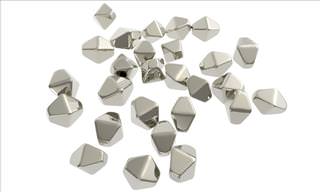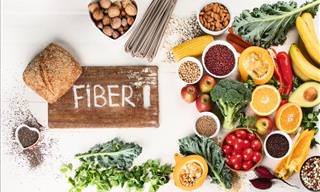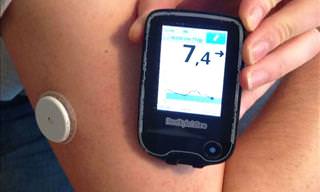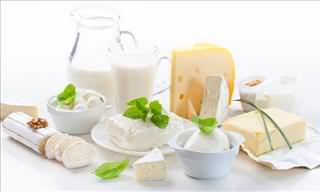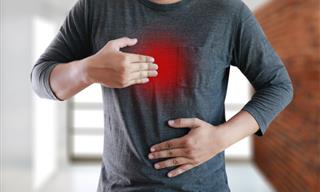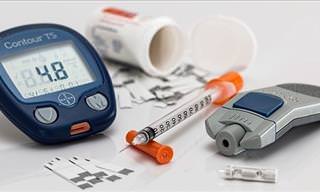|
You might have heard the words “glycemic index” being thrown around, but weren't sure what the whole thing was about. The glycemic index (GI) is a number that is associated with different foods and shows their effect on the glucose levels in the blood (also known as “blood sugar level”). The number represents the total rise in glucose level after eating that food.
|
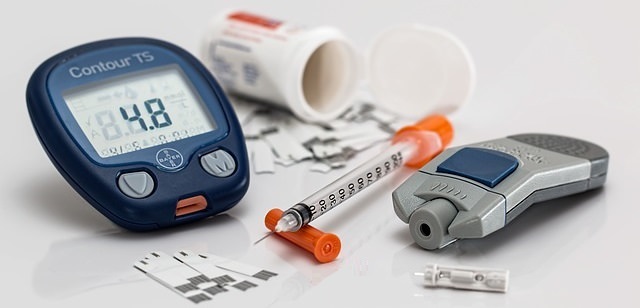 |
|
How the GI is determined:
The level of “sweetness” of a food doesn’t necessarily give it a low or high GI value- Foods with simple carbohydrates break down faster in the stomach, releasing glucose into the blood more rapidly and therefore have a higher GI value. Foods with complex carbohydrates, which break down slower, will have a lower GI value.
Other factors that affect GI levels:
Dietary fiber, fat, protein, vinegar and amylose starch will lower the GI levels in food. Research shows that consuming a small amount of alcohol shortly before a meal will reduce the GI level of the meal by 15%.
GI classification:
|
| Classification |
GI range |
Examples |
| Low GI |
55 or less |
beans (white, black, pink, kidney, lentil, soy, almond, peanut, walnut, chickpea); small seeds (sunflower, flax, pumpkin, poppy, sesame); most whole intact grains (durum/spelt/kamut wheat, millet, oat, rye, rice, barley); most vegetables, most sweet fruits (peaches, strawberries, mangos); fructose; mushrooms; chili peppers |
| Medium GI |
56-69 |
Whole wheat or enriched wheat (not-intact), pita bread, basmati rice, unpeeled boiled potato, grape juice, raisins, prunes, pumpernickel bread, cranberry juice, regular ice cream, sucrose, banana |
| High GI |
70 or higher |
white bread (only wheat endosperm), most white rice (only rice endosperm), corn flakes, extruded breakfast cereals, glucose, maltose, maltodextrins, potato, pretzels, bagels |
Source: Wikipedia.org
|
|
Why do we need to know the GI of food?
Diabetics need to know what their glucose levels are, as changes in these levels can have serious effects on their physical and mental state and may even be detrimental to their health. Non-diabetics can use the GI to better regulate their energy levels and improve results when working out. Some people with a thyroid condition need to control their blood sugar levels in order to lose or maintain weight.
High glycemic foods break down fast, providing a quick energy boost, especially after a workout. Low glycemic foods take more time to break down, making them great fuel to have before a workout, as they release energy into the body in a steady rate. These factors can help you prevent hypoglycemia symptoms.
A 1999 research discovered that people who follow a low GI diet over a prolonged period of time reduce the risk of developing coronary heart disease, type 2 diabetes and even age-related muscular degeneration.
Things to be aware of:
The GI index is not perfect – there are many foods that are low-glycemic which are unhealthy (Chocolate cake – GI 31, ice cream – GI 37) and ones that are high-glycemic that are good for you (Potato/rice – 100 GI). Remember to practice moderation.
|
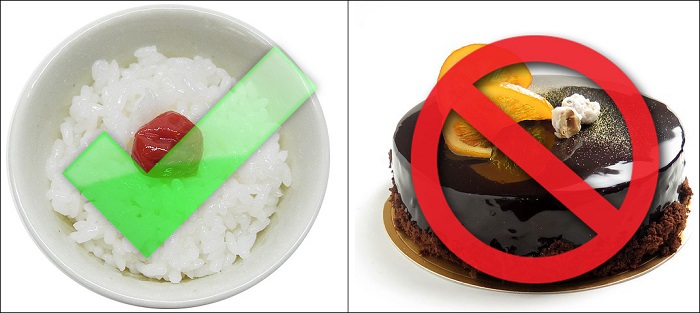 |
|
The amount of carbohydrates in food can have more of an impact than GI on the glucose levels in your blood. Losing weight and consuming less carbs will also lower blood glucose levels.
|
|
The Rise of Blood Sugar Levels After a Meal

Source: Wikipedia.org
|
|
The Harvard Medical School recently published a glycemic index of common foods:
| FOOD |
GI
(glucose = 100)
|
Serving size (grams) |
Glycemic load per serving |
| BAKERY PRODUCTS AND BREADS |
|
|
|
| Banana cake, made with sugar |
47 |
60 |
14 |
| Banana cake, made without sugar |
55 |
60 |
12 |
| Sponge cake, plain |
46 |
63 |
17 |
| Vanilla cake made from packet mix with vanilla frosting (Betty Crocker) |
42 |
111 |
24 |
| Apple, made with sugar |
44 |
60 |
13 |
| Apple, made without sugar |
48 |
60 |
9 |
| Waffles, Aunt Jemima (Quaker Oats) |
76 |
35 |
10 |
| Bagel, white, frozen |
72 |
70 |
25 |
| Baguette, white, plain |
95 |
30 |
15 |
| Coarse barley bread, 75-80% kernels |
34 |
30 |
7 |
| Hamburger bun |
61 |
30 |
9 |
| Kaiser roll |
73 |
30 |
12 |
| Pumpernickel bread |
56 |
30 |
7 |
| 50% cracked wheat kernel bread |
58 |
30 |
12 |
| White wheat flour bread |
71 |
30 |
10 |
| Wonder™ bread |
73 |
30 |
10 |
| Whole wheat bread |
71 |
30 |
9 |
| 100% Whole Grain™ bread (Natural Ovens) |
51 |
30 |
7 |
| Pita bread, white |
68 |
30 |
10 |
| Corn tortilla |
52 |
50 |
12 |
| Wheat tortilla |
30 |
50 |
8 |
| BEVERAGES |
|
|
|
| Coca Cola® |
63 |
250 mL |
16 |
| Fanta®, orange soft drink |
68 |
250 mL |
23 |
| Lucozade®, original (sparkling glucose drink) |
95±10 |
250 mL |
40 |
| Apple juice, unsweetened |
44 |
250 mL |
30 |
| Cranberry juice cocktail (Ocean Spray®) |
68 |
250 mL |
24 |
| Gatorade |
78 |
250 mL |
12 |
| Orange juice, unsweetened |
50 |
250 mL |
12 |
| Tomato juice, canned |
38 |
250 mL |
4 |
| BREAKFAST CEREALS AND RELATED PRODUCTS |
|
|
|
| All-Bran™ |
55 |
30 |
12 |
| Coco Pops™ |
77 |
30 |
20 |
| Cornflakes™ |
93 |
30 |
23 |
| Cream of Wheat™ (Nabisco) |
66 |
250 |
17 |
| Cream of Wheat™, Instant (Nabisco) |
74 |
250 |
22 |
| Grapenuts™ |
75 |
30 |
16 |
| Muesli |
66 |
30 |
16 |
| Oatmeal |
55 |
250 |
13 |
| Instant oatmeal |
83 |
250 |
30 |
| Puffed wheat |
80 |
30 |
17 |
| Raisin Bran™ (Kellogg's) |
61 |
30 |
12 |
| Special K™ (Kellogg's) |
69 |
30 |
14 |
| GRAINS |
|
|
|
| Pearled barley |
28 |
150 |
12 |
| Sweet corn on the cob |
60 |
150 |
20 |
| Couscous |
65 |
150 |
9 |
| Quinoa |
53 |
150 |
13 |
| White rice |
89 |
150 |
43 |
| Quick cooking white basmati |
67 |
150 |
28 |
| Brown rice |
50 |
150 |
16 |
| Converted, white rice (Uncle Ben's®) |
38 |
150 |
14 |
| Whole wheat kernels |
30 |
50 |
11 |
| Bulgur |
48 |
150 |
12 |
| COOKIES AND CRACKERS |
|
|
|
| Graham crackers |
74 |
25 |
14 |
| Vanilla wafers |
77 |
25 |
14 |
| Shortbread |
64 |
25 |
10 |
| Rice cakes |
82 |
25 |
17 |
| Rye crisps |
64 |
25 |
11 |
| Soda crackers |
74 |
25 |
12 |
| DAIRY PRODUCTS AND ALTERNATIVES |
|
|
|
| Ice cream, regular |
57 |
50 |
6 |
| Ice cream, premium |
38 |
50 |
3 |
| Milk, full fat |
41 |
250mL |
5 |
| Milk, skim |
32 |
250 mL |
4 |
| Reduced-fat yogurt with fruit |
33 |
200 |
11 |
| FRUITS |
|
|
|
| Apple |
39 |
120 |
6 |
| Banana, ripe |
62 |
120 |
16 |
| Dates, dried |
42 |
60 |
18 |
| Grapefruit |
25 |
120 |
3 |
| Grapes |
59 |
120 |
11 |
| Orange |
40 |
120 |
4 |
| Peach |
42 |
120 |
5 |
| Peach, canned in light syrup |
40 |
120 |
5 |
| Pear |
38 |
120 |
4 |
| Pear, canned in pear juice |
43 |
120 |
5 |
| Prunes, pitted |
29 |
60 |
10 |
| Raisins |
64 |
60 |
28 |
| Watermelon |
72 |
120 |
4 |
| BEANS AND NUTS |
|
|
|
| Baked beans |
40 |
150 |
6 |
| Blackeye peas |
33 |
150 |
10 |
| Black beans |
30 |
150 |
7 |
| Chickpeas |
10 |
150 |
3 |
| Chickpeas, canned in brine |
38 |
150 |
9 |
| Navy beans |
31 |
150 |
9 |
| Kidney beans |
29 |
150 |
7 |
| Lentils |
29 |
150 |
5 |
| Soy beans |
15 |
150 |
1 |
| Cashews, salted |
27 |
50 |
3 |
| Peanuts |
7 |
50 |
0 |
| PASTA and NOODLES |
|
|
|
| Fettucini |
32 |
180 |
15 |
| Macaroni |
47 |
180 |
23 |
| Macaroni and Cheese (Kraft) |
64 |
180 |
32 |
| Spaghetti, white, boiled |
46 |
180 |
22 |
| Spaghetti, white, boiled 20 min |
58 |
180 |
26 |
| Spaghetti, wholemeal, boiled |
42 |
180 |
17 |
| SNACK FOODS |
|
|
|
| Corn chips, plain, salted |
42 |
50 |
11 |
| Fruit Roll-Ups® |
99 |
30 |
24 |
| M & M's®, peanut |
33 |
30 |
6 |
| Microwave popcorn, plain |
55 |
20 |
6 |
| Potato chips |
51 |
50 |
12 |
| Pretzels, oven-baked |
83 |
30 |
16 |
| Snickers Bar® |
51 |
60 |
18 |
| VEGETABLES |
|
|
|
| Green peas |
51 |
80 |
4 |
| Carrots |
35 |
80 |
2 |
| Parsnips |
52 |
80 |
4 |
| Baked russet potato |
111 |
150 |
33 |
| Boiled white potato |
82 |
150 |
21 |
| Instant mashed potato |
87 |
150 |
17 |
| Sweet potato |
70 |
150 |
22 |
| Yam |
54 |
150 |
20 |
| MISCELLANEOUS |
|
|
|
| Hummus (chickpea salad dip) |
6 |
30 |
0 |
| Chicken nuggets (frozen) |
46 |
100 |
7 |
| Pizza (plain baked dough, parmesan cheese and tomato sauce) |
80 |
100 |
22 |
| Pizza, Super Supreme (Pizza Hut) |
36 |
100 |
9 |
| Honey |
61 |
25 |
12 |
|
 Go to BabaMail
Go to BabaMail






